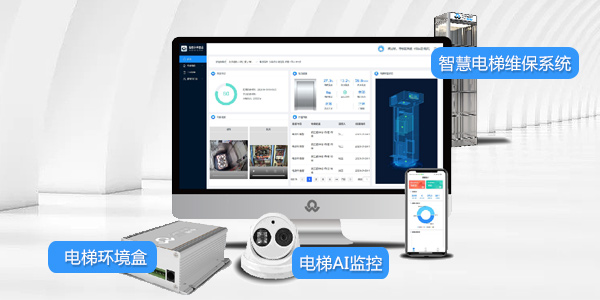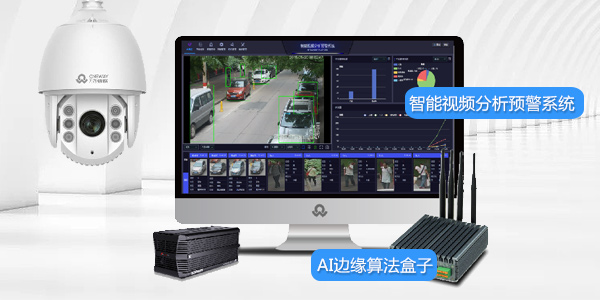Copyright © 2023 Changsha Oneway Robot Co.,Ltd, All rights reserved.
Based on IoT technologies such as artificial intelligence, cloud computing, sensors, and wireless networks, a comprehensive security network with full coverage and real-time monitoring is formed by connecting various security equipment and systems. Whether it is security robots, access control systems, monitoring systems, elevator control systems or fire protection systems, they can all be managed and dispatched through the Internet of Things technology to ensure the safety of the property park without any blind spots.
To address the drawbacks of traditional personnel patrol work, which is uncontrollable、untimely and significantly affected by weather conditions, robots are employed to replace manual patrols in the park. This ensures that patrols are conducted on a scheduled and quantified basis, without interruption, and are not affected by external factors such as weather.
Utilizing IoT-enabled security robots, access control systems, AI cameras, and other sensing hardware, coupled with video and IoT perception technologies, to achieve the collection and integrated processing of security data in the park. This approach provides comprehensive support for park perception analysis and real-time supervision.
Based on various IoT hardware, combined with technologies such as IoT big data platforms and intelligent recognition algorithms, it is possible to achieve security warnings. This enables managers to real-time perceive the overall situation and operational status of the park. In case of anomalies, immediate coordinated actions can be taken, transforming security from a passive to a proactive stance and from a broad approach to a more detailed and refined one.
Disrupting the traditional security model solely reliant on cameras, by integrating IoT devices such as security robots, smart access control, intelligent parking posts, AI cameras, elevator control modules, etc. This significantly enhances the comprehensive intelligent security capabilities of the park.
Closely aligned with various scenarios involved in daily park management, providing a variety of business applications such as human-robot collaborative patrols, remote handling, fixed-point guarding, notification and promotion, high-altitude object detection, elevator control, etc. This promotes a shift in park management from the traditional "mainly manual" approach to "technology-centric with human support," optimizing park management methods and enhancing governance efficiency.
With a rich array of IoT hardware and smart applications, it can significantly enhance the technological image, response speed, management efficiency, and caring capabilities of property services. Allowing systems to replace humans in completing repetitive and simple tasks gives property management more time to address various needs of residents. This creates a more considerate impression among residents, leading to higher satisfaction levels.

The Robot Management System (RMS) is a cloud-based management software for robots that integrates functions such as robot task management and scheduling, data storage and analysis, information input and display, accident analysis, and early warning. When combined with effective collaboration between robots and security or law enforcement personnel, RMS significantly reduces blind spots in supervision, improves work efficiency, reduces workload, and minimizes the need for manpower. Additionally, leveraging IoT technology, the Robot Management System is compatible with various intelligent terminals beyond robots, enabling seamless connectivity between robots, cameras, sensors, gateposts, and parking posts. This breaks down information silos, achieving unified and efficient management. Furthermore, RMS can open access interfaces for robot and IoT data, seamlessly integrating with smart security systems, law enforcement systems, smart city systems, and others, realizing data fusion display and one-stop operation.
The Unmanned Guard Post System is an important component of smart property management. This system consists of a smart property gate management platform, mobile user end, facial recognition terminal, and cloud brain. Leveraging advanced technologies such as facial recognition, IoT, big data, and mobile internet, it enhances the security and prevention level of the community, helping property management improve control efficiency, reduce labor costs, and increase economic income. This system has been widely applied in scenarios such as residential communities, office buildings, schools, and corporate parks.


The Smart Elevator Maintenance System is primarily designed to address various challenges faced by property management in elevator management, such as the inability to predict potential faults, uncontrollable response times for repairs, difficulty in tracing uncivilized elevator usage, and challenges in supervising the maintenance process. The system aims to achieve visualization of elevator faults, automation of rescue operations, standardization of elevator usage, and transparency in maintenance. Property management, when confronted with unexpected elevator situations, can transition from the previous “passive response” to a proactive “predictive handling” approach.
The Intelligent Video Analysis Warning System is a comprehensive ecosystem product jointly launched by Oneway IoT and its ecological partners. It is specifically designed for the park sector, utilizing robust AI chips and incorporating various AI algorithms, such as unstructured analysis of people and vehicles, facial recognition, behavior analysis, perimeter alert, and fire alert. The system effectively ensures the security of industrial parks, campuses, communities, and other production and asset facilities. With one-click deployment and prompt effectiveness, it provides customers with the most competitive intelligent solutions.


The Robot Elevator Control System is a specialized system for intelligent robot passage and elevator dispatching. This system can achieve unified integration and dispatching of elevators, multi-elevator scheduling, and human-robot collaboration. During the elevator ride, the control system and the robot engage in bidirectional interaction, bidirectional communication, and interactive control, ensuring the safety of the robot entering and exiting the elevator, with multi-level error prevention and correction, anti-pinch, and anti-collision features. The solution supports single elevator, multi-elevator, and multi-robot elevator capabilities, along with intelligent scheduling management. It is versatile, doesn’t require inspection for device installation, enables rapid deployment, helps expand the application scope of robots, and enhances passage efficiency.
The Managed Charging System(MCS) is a system designed to facilitate information exchange and hierarchical data collection and control between the power distribution network, users, charging piles, and electric vehicles. The managed charging system monitors the real-time power consumption at the user end, senses trends in grid load changes, and dynamically adjusts the charging time and power of charging piles without changing the existing infrastructure. This optimization helps improve the operation curve of distribution transformers, achieving peak shaving and valley filling. The use of the managed charging system can meet the needs of new charging users, address the contradiction between the difficulty of expanding power supply infrastructure and the rapid growth of new energy vehicles, enhance the utilization of distribution network equipment and generation equipment, and reduce investments in the power grid and generation equipment.is a system designed to facilitate information exchange and hierarchical data collection and control between the power distribution network, users, charging piles, and electric vehicles. The managed charging system monitors the real-time power consumption at the user end, senses trends in grid load changes, and dynamically adjusts the charging time and power of charging piles without changing the existing infrastructure. This optimization helps improve the operation curve of distribution transformers, achieving peak shaving and valley filling. The use of the managed charging system can meet the needs of new charging users, address the contradiction between the difficulty of expanding power supply infrastructure and the rapid growth of new energy vehicles, enhance the utilization of distribution network equipment and generation equipment, and reduce investments in the power grid and generation equipment.


The Property EBA Comprehensive Management Platform (EBA System) utilizes Internet of Things (IoT) and internet technologies to provide 24-hour automatic monitoring and centralized remote management of various equipment systems. It allows remote control and command of on-site facilities and equipment, providing comprehensive control over the operation and daily management information of the property group, playing a supervisory and guiding role.The system, through monitoring and managing modules such as IoT, property management, security, energy consumption, and the supply chain, along with the collection and analysis of relevant module data, promptly identifies issues. The system then provides optimal solutions, enhancing operational efficiency, reducing operating costs, and lowering the technical requirements for on-site staff while ensuring maintenance quality.
ACENET multiple convolutional neural network algorithm, effectively identifying facial features. It utilizes a camera to capture images or video streams containing faces and automatically detects and tracks faces within the images.
License Plate Recognition (LPR) technology is used to automatically identify and extract information such as license plate numbers and plate colors from images. This technology finds applications in areas like electronic policing systems, parking management, and highway toll collection.
Behavior detection and recognition technology can accurately identify and anticipate potentially dangerous behaviors such as crowds gathering, fighting, or climbing walls in a crowd. It promptly alerts security personnel, enabling them to take proactive safety measures and reduce the risk of injuries or casualties.
Based on the recognition training with a large dataset of flame data, coupled with cameras, the system can real-time identify open flames within the monitoring area. It immediately issues an alert, notifying the control room to review and take timely measures to mitigate the situation. It is suitable for various complex indoor and outdoor environments.
Analyzing the massive amount of data, evaluating the results, and presenting event alerts with intelligent scheduling solutions on the big data visualization interface.
IoT collects terminal data and integrates third-party data, supporting multiple protocols and multidimensional data
Process various complex data types in a corresponding manner to obtain standardized、clean and continuous data.
Please provide a brief description of the subject or purpose of your contact, such as “Product inquiry,” “Technical support,” “Cooperation ntention” etc., to help us quickly understand your needs.
